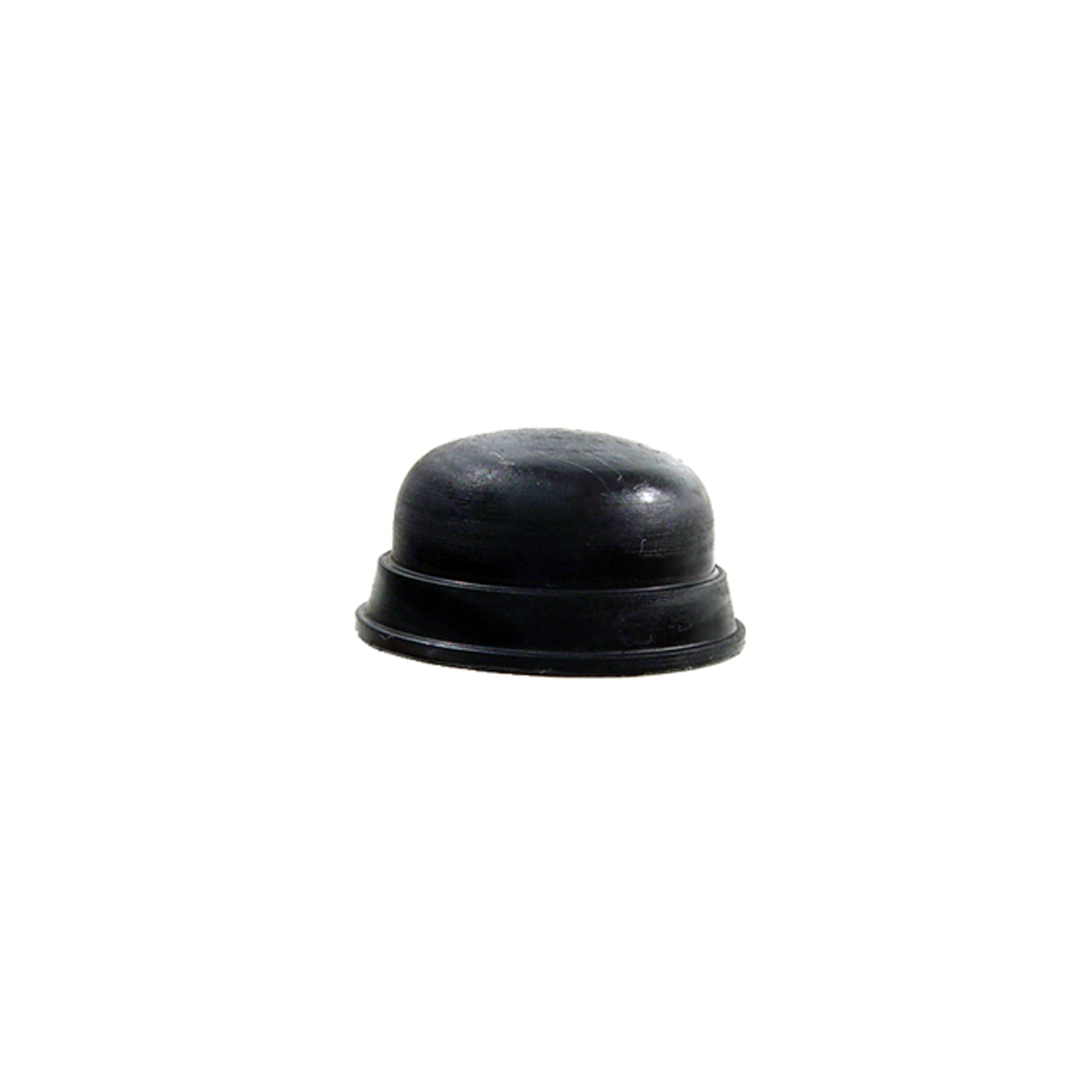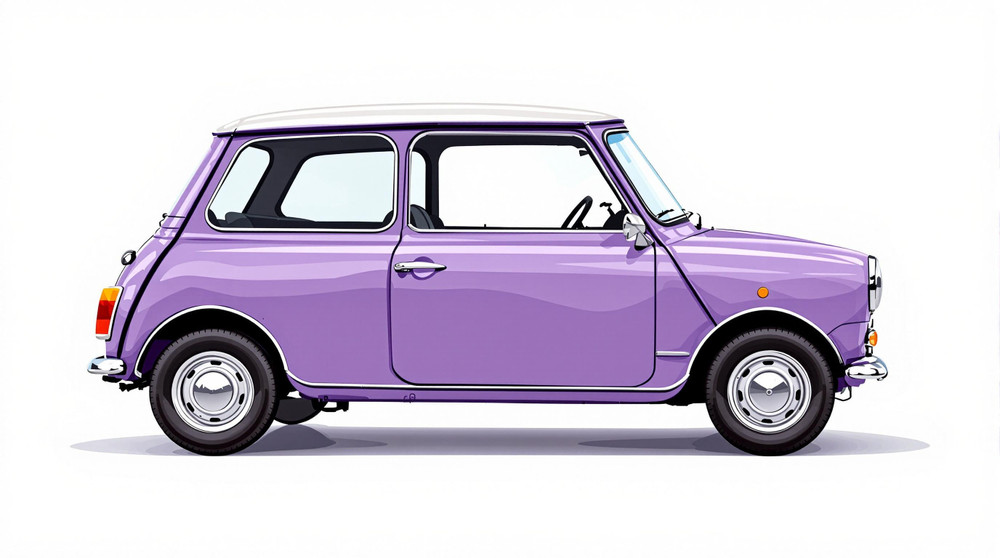Image of 1962 Austin Mini Cooper, Note: These illustrations use artistic license and may differ from actual historical models.
Performance Metrics
Fundamental Metrics
Emotional Appeal
MMP Rating
| Engine Specifications | |
|---|---|
| Engine: | 848 cc I4, 997 cc I4, 998 cc I4, 1071 cc I4, 1275 cc I4 |
| Displacement: | 848-1275 cc |
| Horsepower: | 34-76 hp |
| Torque: | 44-79 lb-ft |
| Compression Ratio: | 8.3:1 - 9.75:1 |
| Ignition System: | Distributor and coil |
| Cooling System: | Water-cooled |
| Performance Specifications | |
| 0-60 Time: | 13-25 seconds |
| 1/4 Mile Time: | Estimated at 17-20 seconds |
| Top Speed: | 72-92 mph |
| Transmission and Drive | |
| Drive Type: | Front-wheel drive |
| Transmission Type: | 4-speed manual |
| Fuel and Efficiency | |
| Fuel System Type: | Carburetor |
| MPG: | 30-40 mpg |
| Dimensions and Brakes | |
| Brakes: | Front disc brakes and rear drum brakes |
| Wheelbase: | 80.0 in |
| Weight: | 1,275-1,400 lbs |
Note: Specifications for classic cars are given to the best of our ability, considering the limited and variant data available.
The Quintessential British Icon: 1962 Austin Mini Cooper
The 1962 Austin Mini Cooper emerged as a marvel of compact engineering, capturing the hearts of enthusiasts and the general public alike. Born out of the Suez Crisis fuel shortages, it was designed by Sir Alec Issigonis for the British Motor Corporation (BMC) and quickly became a symbol of 1960s British culture. Its unique combination of affordability, practicality, and performance made it an instant classic. A notable moment in its history was when the Mini Cooper S clinched its first Monte Carlo Rally victory in 1964, cementing its reputation as a giant-killer on the racing scene.
Design and Innovation
The exterior of the 1962 Mini Cooper was characterized by its boxy yet charming proportions, with a transverse engine layout that allowed for an astonishingly spacious interior relative to its size. Inside, the Mini was surprisingly simple yet functional, with a focus on maximizing space. The quality of materials reflected its economy car status but was durable and well-considered. Technologically, the Mini's front-wheel-drive and innovative rubber cone suspension system were groundbreaking, offering nimble handling that would influence generations of cars to come. The color palette included vibrant shades like Tartan Red and Speedwell Blue, with contrasting roof colors adding to its appeal. The most iconic body style was undoubtedly the two-door saloon, which became synonymous with the Mini name.
Historical Significance
The Austin Mini Cooper's impact on automotive design is undeniable. It pioneered the transverse engine front-wheel-drive layout now common in small cars. This innovation not only maximized interior space but also contributed to its legendary handling characteristics. The Mini stood out from its contemporaries with its go-kart-like driving experience and became a blueprint for economical car design.
Performance and Handling
Performance-wise, the 1962 Mini Cooper was no slouch for its class, with a top speed around 90 mph and a 0-60 mph time just shy of 13 seconds – impressive for its era. The handling was where the Mini truly shone; it could tackle sharp bends and bumpy roads with aplomb thanks to its low center of gravity and innovative suspension system. Driving a Mini Cooper was an engaging experience; from the distinctive sound of its A-Series engine to the direct steering feedback, it connected driver and road in a way few cars could.
Ownership Experience
The Austin Mini Cooper found use in various roles from daily commuting to weekend racing. Its reliability was generally good for the time, though rust could be an issue as with many cars of that era. Maintenance and repairs were relatively straightforward due to the simplicity of its design and abundant parts availability.
Fun Facts
A fun fact about the Mini is that it has been owned by numerous celebrities including The Beatles' members and Steve McQueen. It held records for fuel efficiency which were particularly noteworthy during fuel crises. Despite criticisms over time regarding safety in high-speed collisions due to its small size, it remained beloved for its character and economy.
Collector's Information
Today, a well-preserved 1962 Austin Mini Cooper can fetch anywhere from $20,000 to over $40,000 depending on condition, originality, and historical significance. Approximately 1,000 units were produced in 1962 making them relatively rare finds today. As classic Minis continue to appreciate in value due to their iconic status and enjoyable driving dynamics, they remain a sought-after collector's item.
Conclusion
The 1962 Austin Mini Cooper is more than just a car; it's a cultural icon that encapsulates British ingenuity and charm. Its revolutionary design changed automotive history forever while providing joy to countless drivers around the world. Whether you're an avid collector or simply someone who appreciates classic automotive design, the Mini Cooper stands as a testament to innovation and timeless appeal.
1962 Austin Mini Cooper Catalog of Parts
 1962 Austin Mini Cooper Starter Solenoid Button Cover. Perfect reproduction. Each-RP 1Starter Solenoid Button Cover. Perfect reproduction. Each
1962 Austin Mini Cooper Starter Solenoid Button Cover. Perfect reproduction. Each-RP 1Starter Solenoid Button Cover. Perfect reproduction. EachWhy Choose Metro?
For over 100 years, Metro Moulded Parts has been the pinnacle of quality in classic car restoration parts. Our commitment to precision and authenticity in every component ensures a perfect fit and an OEM-level appearance.
- Expert Craftsmanship & Quality: Each part is a testament to our dedication to reliability and perfection, crafted from original designs and thoroughly tested.
- Advanced Technology: We use cutting-edge techniques to create flawless, long-lasting parts that surpass others in performance.
- SuperSoft Sponge – The Ultimate Door Seal: Not only are our door seals 30% softer than competitors', but they're also guaranteed to never leak. They effectively reduce wind and road noise, enhancing your classic car's comfort and driving experience.
- Proudly American: Our parts are a product of American craftsmanship, made in the USA with a spirit of excellence and heritage.
- Unrivaled Warranty: We back our products with a 30-year industry-leading warranty, a testament to our confidence in their quality.
Join us in preserving the legacy of classic cars with parts that are crafted for perfection, not just made.

